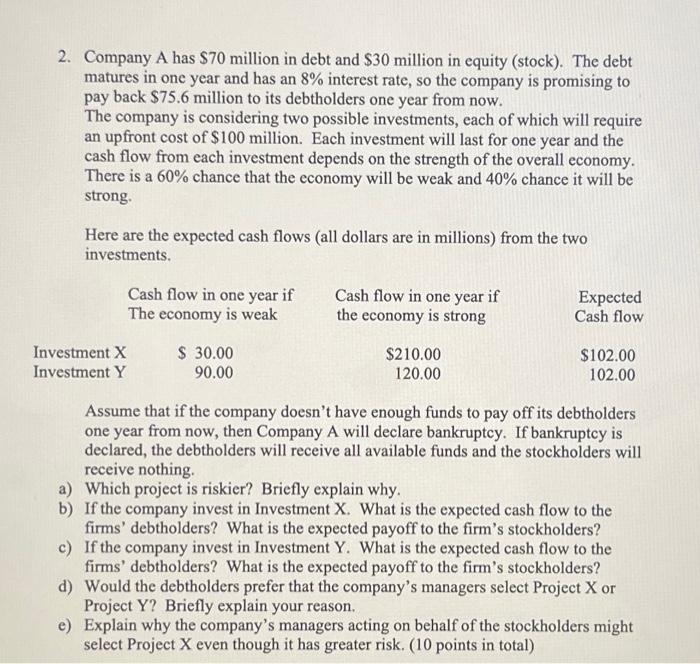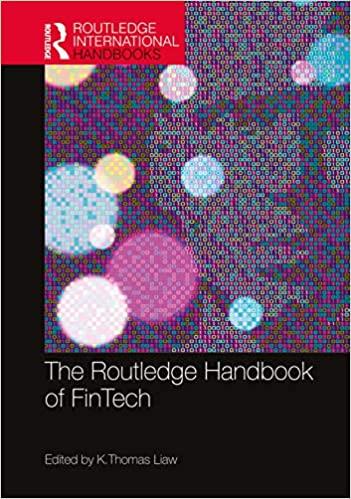2. Company A has $70 million in debt and $30 million in equity (stock). The debt matures in one year and has an 8% interest rate, so the company is promising to pay back $75.6 million to its debtholders one year from now. The company is considering two possible investments, each of which will require an upfront cost of $100 million. Each investment will last for one year and the cash flow from each investment depends on the strength of the overall economy. There is a 60% chance that the economy will be weak and 40% chance it will be strong. Here are the expected cash flows (all dollars are in millions) from the two investments. Assume that if the company doesn't have enough funds to pay off its debtholders one year from now, then Company A will declare bankruptcy. If bankruptcy is declared, the debtholders will receive all available funds and the stockholders will receive nothing. a) Which project is riskier? Briefly explain why. b) If the company invest in Investment X. What is the expected cash flow to the firms' debtholders? What is the expected payoff to the firm's stockholders? c) If the company invest in Investment Y. What is the expected cash flow to the firms' debtholders? What is the expected payoff to the firm's stockholders? d) Would the debtholders prefer that the company's managers select Project X or Project Y? Briefly explain your reason. e) Explain why the company's managers acting on behalf of the stockholders might select Project X even though it has greater risk. ( 10 points in total) 3) Answer the following questions (5 points each) a: What is firm's intrinsic value? What is firm's current stock price? Is the stock's "true" long run value more closely related to its intrinsic value of to its current price? Explain. Why stock price and intrinsic value are not the same most of the times? b. Edmund Enterprises recently made a large investment to upgrade its technology. Although these improvements wont' have much effect on performance in the short run, they are expected to reduce future costs significantly. What effect will this investment have on Edmund Enterprises' earnings per share this year? What effect might this investment have on the company's intrinsic value and stock price? c. Do you agree with the following statement: "Society created companies to provide goods and services that consumers want, not to push social values that only a subset of people agree with." Elaborate you








